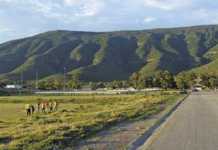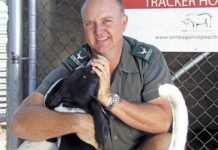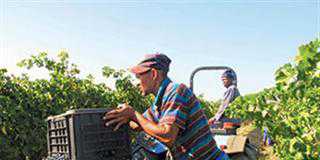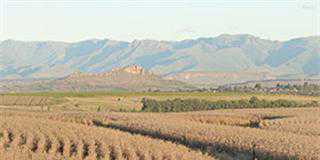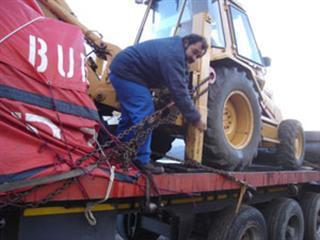
And, of course, the burning and stoning of trucks cannot be condoned. Nevertheless, I was recently reminded by some of the vitriolic comments in media stories how easily we pillory and dismiss truck drivers without knowing very much at all about the way the way they work and live.
In the 1990s the African truck driver gained a reputation through the media for being ‘diseased’, a vector for AIDS and other STDs. In 2008 I wanted to explore some of these claims and boarded a truck bound for Lusaka.
The trip dispelled a great many of the preconceptions people have about truck drivers. In fact, you might say it was life-changing, because by the time I was released from jail in Lusaka, I had decided that I wanted to be a journalist for good, the kind of person who, in the words of my friend Dave Southwood, “enjoys buggering around in places one wouldn’t normally bugger around in.”
(You can read accounts of that trip here: http://www.seanchristie.co.za/articles/life-in-the-slow-lanes-of-southern-africa/ And on my personal blog, starting 9 April 2012: http://www.seanchristie.co.za/blog/2012/04/)
As the recent strike wore on and public disdain for the trucking fraternity mounted I recalled the kind and courteous truckers I had met, the fact that they were all heads of families and often God-fearing pillars of their communities. Then again, these men were all over 50, with different values to the generation coming through, for who they had nothing but disdain. They were also not South African – mostly they were Zimbabwe- and Zambia-born.
I initially accepted what the old truckers said about their young SA counterparts, but it began to bother me that I had not sought my own evidence. I contacted Slabbert & Burger, a Wellington-based freight company known to many farmers, and anyone who travels the Cape highways, and asked for a berth on a truck.
In the end, I never wrote about the journey I took because something tumultuous happened in the weeks that followed, so imagine my delight upon discovering that I still have the little notebook I took along. The entries are reproduced here for anyone interested in a glimpse of what it’s like to be a truck driver in South Africa…
Day 1
Met at the Slabbert & Burger yard by a fair-haired guy called Bruce Kearley from the family that owns Kearley’s Transport. He wasted no time in explaining about the family feud that compelled him to join the competition. He introduced me to the owners, Jannie and Martin, truly enormous men – men so big a great elevator is required to lift them to their corner offices on the second floor of the two storey Slabbert & Burger headquarters each day.
Bruce had stuff to do and invited me to sit in his office to kill time. I took in the performance certificates which had not yet been hung on the freshly painted walls, and an old advertisement picturing Slabbert Burger, father of Jannie and Martin and founder of the company, on the back of a truck’s trailer beneath the words Op die groot pad vorentoe.
Later, I’m given an indemnity to sign. I also meet Schalk Bruwer, the ex-cop in charge of company security. I’m reminded of Harvey Keitel’s character in Pulp Fiction, a man in a suit who can make difficult problems disappear. I’ll learn that the drivers fear him tremendously. He pitches up willy-nilly in truck yards all over the country, shining torch beams into cabs in the middle of the night.
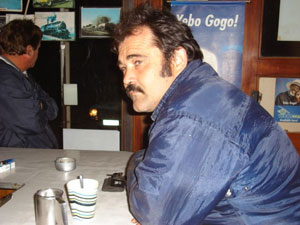
Manie Steyn, true blue South African trucker, at the Laingsburg truck stop Vlam in Die Pyp.
In due course I’m introduced to Manie Steyn, who’s in his 40s with thick black hair, black lambchops and a black moustache. He must have been a good-looking youth, but a life of sitting has distended his stomach and fattened his face.
The cab of his truck is very neat. A tube of fabric softener on the dashboard has imparted its floral notes to the entire space, which was further softened by the soft toy mouse stuck to the windscreen with a plastic suction pad.
Manie’s load for this trip is a chained-down earthmover. There’s no ceremony to our departure, we simply pulled out of the yard, crushing the puddles, and turn left towards Ceres.
By the time we join the N1 Manie’s dropped his reserve. He says “nê” after most of his sentences and tells me started driving trucks in the early 1980s, “long-nose trucks, like you get in America. I opened the Congo up for them at that time.”
Before that he was a Parabat in the SADF and made 400 jumps. Later, he qualified as a diesel mechanic. Like so many truckers he’s bought property along the route he travels most frequently – in Christiana, on the N12.
In the ‘old days’ Manie (and most other truckies) used to drive over 30 000km/month, or more than 1 000km/day, or roughly 18 hours of driving out of 24. These days the company limit is 18 000km. All Slabbert & Burger tractor engines are restricted to a flat limit of 85km/h, and no driving is allowed between 10pm and 4am.
Every trucker is assigned to a handler in the operations room, and all trucks are tracked at all times. If there’s movement after the curfew the handler comes over the radio, and if there’s no response the security team is despatched. Disobeying the curfew rule “gets you in big shits,” says Manie.
Once we’re free of the Hex River Valley, Manie talks about some of the interesting loads he’s carried. There’s nickel, for example, which is very dangerous to transport because its value attracts hijackers, “who shoot you dead, cos it’s standard practice to leave no witnesses,” explains Manie. He also once trucked goodies up to the Congo for a Christmas party for the generals of the Congo army.
And there was the time he hauled something so sensitive to Johannesburg that he had a police escort. “I tried to get them to tell me what it was, but they kept the papers on them at all times, and when we reached the destination they just told me ‘Go’,” he says.
Interestingly, wine “is the load that is stolen most often, usually with the co-operation of skêlm drivers.”
Manie reckons he’s travelled almost every road in the country in his 30 years as a trucker, and seen nearly every town.
It’s dark by the time we reach Laingsburg, where Manie pulls into a truck yard called Vlam In Die Pyp for coffee and a rest. It reminds me of the Somali lunch rooms I’ve seen in Cape Town: lit like a camera flash by sodium strip lights; lino floors; a tiled counter littered with stainless steel ashtrays and stainless steel milk pourers. The walls are plastered with Vodacom posters, pictures of steam trains and photographs of bad trucking accidents.
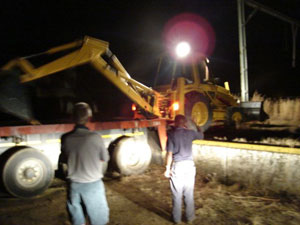
It’s late at night, the blurred quality of the photo can be taken as a sign of just how tired everyone is but at least the earthmover is offer the truck!
The latter make it easy to distinguish which of the customers are truckers and which are mere motorists – they’re the ones ogling the morbid pictures.
Manie sits with his arms crossed on the counter. He’s wearing a blue jacket with a hole under the armpit and his truck keys and canvas wallet are next to his coffee mug. He sits like that for some minutes after finishing his coffee, looking tired.
Then he says: “We must go or we’re gonna have a problem.” He uses the word ‘problem’ a lot, usually in the sentence “We gotta problem”; says it resignedly, like someone for whom problems are the grammar of everyday life.
We spend the night at Beaufort West, in a yard behind a BP garage, with me on the bottom bunk, Manie above, his body sagging to centimetres of mine.
Day 2
Off at 5am, and a long day on the road to make up for yesterday’s late start. Manie’s mood changes with the kilometres. By late afternoon it’s hot and he’s dyspeptic, lashing out at the government, at his employers, other truckers… not his normal philosophical self, but a caged bear, much poked. With the light fading we leave the highway and head east, towards Greylingstad. On the way we pass a field and this provokes Manie’s memory.
“The one time I was driving on this road and I just stopped all of a sudden next to this field and got out and walked right out into the middle and sat down, and I told myself I would never get back into my truck again.
“Another truck driver who knows my truck stopped there as well and he walked out and asked me if I was all right. I told him I was gatvol and he sat down too. Then it got late and we both stood up and went back to our trucks and carried on,” he says, speaking against the background roar of the truck’s engine as it struggles through a highveld pass.
We reach a railway siding near Greylingstad as the light is fading. There’s some confusion as to whether it’s the right place, because the owners of the earthmover are nowhere to be seen. The siding is also lower than the trailer, so much so Manie can’t believe it’s right place.
When confirmation comes through that this is indeed the right place Manie whistles and says: “We gotta problem.” The problem, of course, is how to get the earthmover from the trailer onto the siding. “The earthmover doesn’t have that much clearance, so the chassis will jam on the back of the trailer before the front wheels touch the ground, and then we gotta problem,” observes Manie.
The new owners, who have now arrived, won’t accept his theory, so he shrugs and sets about unbuckling the digger: winching and clanking chains, and pulling his hand across his throat whenever one of the new owners fires up the digger prematurely. And then both of the owners, one large man and one skinny, are scratching their heads, because the machine has jammed just as Manie has foreseen it would.
The men have brought along a driver, and he suggests using the back of the bucket to pull the digger off the trailer. To do this he puts down the hydraulic struts at the back of the machine, to anchor it. He then pushes the bucket down against the floor of the siding. This lifts the front wheels and the back wheels move closer to the end of the trailer.
It seems as if the driver’s solution is working, but when he tries to raise the back supports hydraulic oil gushes out of one with such force it explodes into a fine black mist. The strut is now locked in place. After much shouting and swearing, the driver tries to edge the machine off the trailer using the bucket as a kind of clawing arm.
Eventually, with a crunch, the digger comes off. It’s now late, after 10pm, way past ‘curfew’ and Manie’s understandably curt when his handler comes over the radio to ask him why we’re not at the Joburg depot. Looks like we gotta another problem.


